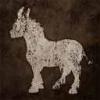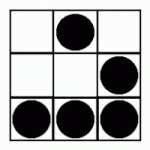Search the Community
Showing results for tags 'texture'.
-
Dear Community, Thank you very much for the magnificent project! Currently, I am trying to create a filter which is based on a shader ""Godrays" by alaingalvan", but the one which only lightens a certain area where "lights" exist on a transparent stage. The current version creates dark places ('0x000000') where the "lights" are not shown, but the darkness must not surpass the background ('0x333333' or '0xffffff' as in CSS), so it would look like a transparent filter in the result. This is the incorrect behavior since it creates black background where the "lights" are (it is correct that it affects the background): ~ Is it even possible using this filter/shader? Is it correct that the issue is in the color matrix ("float noise(in vec3 p)")? Would it be correct to somehow base a pixel color on the source and only increase its "gain" instead? I will highly appreciate any suggestion! Best and kind regards
-
Hello! I have a sprite with a fully transparent texture. I want to make it glow. I tried to achieve this with filters, but most of them do not work for such a sprite. Only CrossHatchFilter and GodRayFilter work. GodRayFilter is very nice and would suit me, but it creates a black background around the sprite. Is there any way to highlight such a sprite? I also tried pixi-heaven from this example https://pixijs.io/examples/#/plugin-heaven/spineboy-pro.js. But it also doesn't work for a sprite with a transparent texture.
-
Hello friends. I need a little help in my project. I have array of images with id and url. any part of those images can be rendered in different occasions, based on user filtering. I have custom resource manager which saves all downloaded images (or failed downloads) with id and resource returned by PIXI.Loader, and for each new image checks if texture is already available, if not adds id and url to Loader and loads. Now my problem is that image array itself is also user defined, so url's might be incorrect or duplicate. If there's two images (two different IDs) to be displayed and they have same url, I technically dont have them downloaded because I'm checking with id and they have different id, so I'm adding both to the Loader resource and load. I dont know how loader handles that but it throws this warning: BaseTexture added to the cache with an id [image url] that already had an entry Warning itself is not big of a problem, but I think loader still downloads the image twice and then tries to cache it, and then is this warning thrown. so I dont want download to be performed twice when I know that i already have a texture (or will have with different resource I guess). Can anyone please help me. I dont even know what can be the correct fix in this case, let alone how to do that
-
Hi, I am making a Lighting filter for PIXIJS 4 in RPGmaker MV but I've encountered some strange behavior regarding Render Textures. for some strange reason, rendering the scene to a render textures causes the position of the lights to mirror on the Y axis and I have no idea why. here are some photo's of what i mean. Below is a Screenshot of the scene in real time. and this is the resulting render Texture. As you can see, the blue light close to thew center barely moved, while the yellow one moved from the bottom of the screen to the top. neither lights changed in X-axis values. the lights themselves do not move, this only appears in the render texture. the render texture is generated using this code on one of the RPGmaker Events script call, however the effect seems to be affecting all PIXI render textures, including those used by the default engine. here is the code the generate the render texture an make a sprite. the sprite is rendered to the scene. rt = PIXI.RenderTexture.create(1280,720); renderer = Graphics._renderer; renderer.render(SceneManager._scene, rt); sprt = new PIXI.Sprite(rt); SceneManager._scene.addChild(sprt); At first I thought it may have to do with Transformation Matricies within the shader. As far as i know I couln't find anything obvious. here's a test shader I prepared below below. varying vec2 vTextureCoord; uniform sampler2D uSampler; vec4 lightDiffuse(vec2 lposition,vec4 ldiffuse,float lquadratic,float llinear){ float distance=length(lposition-gl_FragCoord.xy); float attenuation=1./(1.+llinear* distance+ lquadratic*(distance*distance)); return ldiffuse*attenuation; } void main(){ vec4 result=vec4(0.,0.,0.,0.); vec4 ambience=vec4(.1,.1,.1,1.); //Hard coded light 2 vec2 lPositionA=vec2(720.,200.); vec4 lDiffuseA=vec4(0.,1.,1.,1.); //Hard coded light 1 vec2 lPositionB=vec2(100.,125.); vec4 lDiffuseB=vec4(1.,1.,0.,1.); result+=lightDiffuse(lPositionA,lDiffuseA,.07,.05); result+=lightDiffuse(lPositionB,lDiffuseB,.007,.005); gl_FragColor=vec4(ambience.rgb+result.rgb,1)*texture2D(uSampler,vTextureCoord); } I've also prepared a test plugin for RPG maker that will load said shader and apply it as a filter the the Scenes Spriteset. (essentially Container containing sprites and tile maps but no UI or system sprites). Even with those hard coded values, the issue still arises, hence why I though it may a matrix issue. The plugin loads the loads the shader on start up and stores globally, then when you enter a Map scene, the map sprite will also create a filter for itself that contains the shader code. I can provide a build if its necessary. The code looks for the shader in "/js/Shaders/". the Shaders folter doesnt normally exist in RPGmaker projects. var DSE = DSE || {}; DSE.Lighting = function (_export) { _export.shader = null; function loadShader(name, type) { var xhr = new XMLHttpRequest(); xhr.open('GET', '/js/Shaders/' + name + type); xhr.onreadystatechange = _onShaderLoad.bind(this, xhr, type); xhr.send(); } function _onShaderLoad(xhr, type) { console.log("shader loaded?"); if (type == ".frag") { _export.shader = xhr.responseText; } } loadShader("LightTest", ".frag"); /** * @override */ Spriteset_Map.prototype.createLowerLayer = function () { Spriteset_Base.prototype.createLowerLayer.call(this); this.createParallax(); this.createTilemap(); this.createCharacters(); this.createShadow(); this.createDestination(); this.createLightLayers(); this.createWeather(); }; Spriteset_Map.prototype.createLightLayers = function () { console.log(_export.shader); this._filters = [new PIXI.Filter('', _export.shader)]; }; return _export; }({}); upon using both of those files and the script call in a new project the result is the same. I've yet to look in the PIXI JS file itself , but i figured I'd start either the PIXI.Filter or Render texture classes. I'm not sure exactly how they work, but I hope its simple enough. I couldn't find anything on google about this nor on this forums aside from this: https://github.com/pixijs/pixijs/issues/2074 which upon reading seems to be an entirely different issue. Anyway , I'm posting this here, to make sure it isn't something silly I've done rather than a bug with PIXIJs. Any advice would be greatly appreciated.
-
Hello Everyone, I'm primarly a .Net Developer(c# backend), and not so long ago i started a new project. I choise as rendering engine technology pixijs v6.0 (latest version) I'm quite new to pixijs and typescript and stubled upon a stange error. This error is that a sprite/texture not gets loaded/displayed to the screen.. Why this occuers i have no clue... If i create a simple unstructed project i can load textures fine,but in my structerd program nothing gets displated.. If i add a text object for example i have no issues... nor with drawing rectangles. I Really really hope someone can help me, scavanged the internet for a while now to find a sollution. Regards Me #Index Typescript File -> import * as PIXI from 'pixi.js'; import { Engine } from './Engine/Engine'; //Gobal Variale //declare const window: any; declare global { interface Window { app: any; Display: any; } } export class Game extends Engine { static instance: Game; //private _currentScene?: IScene; public lang: string; //public games: { [key: string]: IScene }; _init: boolean; constructor(parent: HTMLElement) { if (!parent) throw new Error("aprent element must be div!"); const aspect = window.innerWidth / window.innerHeight; //l size = { ...Config.ReferenceSize }; //fallback PIXI.settings.PREFER_ENV = PIXI.ENV.WEBGL; super({ autoStart: true, backgroundColor: 0xFF00FF, width: 1200, height: 1200 //...size }); parent.appendChild(this.view); this.render(); // renders the world //@ts-ignore Game.instance = this; PIXI.utils.sayHello; } } //Hooks.. window.Display = () => { const app = (window.app = new Game(document.querySelector("#gameid"))); }; #Engine TypeScript File -> import * as PIXI from "pixi.js"; import { IEngineOptions } from './Classes/Interfaces/IEngineOptions'; import { IEngine } from './Classes/Interfaces/IEngine'; export class Engine extends PIXI.utils.EventEmitter implements IEngine { public renderer: PIXI.Renderer; public ticker: PIXI.Ticker = new PIXI.Ticker(); public loader: PIXI.Loader = PIXI.Loader.shared public world: PIXI.Container = new PIXI.Container(); public init: Function; constructor(options: IEngineOptions) { super(); this.renderer = new PIXI.Renderer(options); // good this.init = () => { }; } get view(): HTMLCanvasElement { return this.renderer.view; } render() { const testGraphic = new PIXI.Graphics(); testGraphic.beginFill(0xFFFF00); testGraphic.lineStyle(5, 0xFF0000); testGraphic.drawRect(0, 0, 300, 200); let x = new PIXI.Text('This is a PixiJS text', { fontFamily: 'Arial', fontSize: 24, fill: 0xFFFFFF, align: 'center' }); x.position.x = 5; x.position.y = 250; <b>// Not Working and asset exist..</b> let background = PIXI.Sprite.from('./Assets/UIElements/ribbonBackground.JPG') background.position.x = 0; background.position.y = 0; this.world.addChild(testGraphic, x, background); this.renderer.render(this.world); } destory(params = { children: false }) { this.world.destroy(params); this.ticker.destroy(); this.renderer.destroy(true); } } //} // Engine
-
Hi everyone I have a texture which I use it in Graphics.lineTextureStyle : the whole code goes like this : const app = new PIXI.Application({ antialias: true , width:1000 , height:1000 , backgroundColor: 0xFFFFFF }); document.body.appendChild(app.view); const texture = PIXI.Texture.from('./a.png'); // the size of image file : 900*900 const g = new PIXI.Graphics(); g.lineTextureStyle({width:40 , texture:texture , alignment:0}); g.beginFill(0); g.drawRect(0,0 , 900,900); // the size of rectangle : 900*900 g.endFill(); app.stage.addChild(g); the result : now I want to change the size of rectangle to 400*400 but texture stays the same size so most of texture gets clipped like so : how to change the size of texture to match it with the size of rectangle ?
-
Since graphic sprites have no anchors, the only way to position a texture used with BeginTextureFill is the defaultAnchor of the texture. However, changing the defaultAnchor seems to have no effect. I've tried every combination of anchoring and positioning and this is the consistent result (below). Both texture and sprite are the same dimensions (400 x 400).
-
For my Pixi Project, i need to display 4 short numbers: 15, 30, 45 and 60 over 200 times on my stage. Also, on window resize - the text will get resized not based on linear window dimensions. Because of this, i think it is a good strategy to create textures for those 4 numbers and use them when i create the sprites. var minute = new PIXI.Sprite(minute_30_texture); My Problem: i am not able to create Sprites from PIXI.Text("30").texture; var texture = new PIXI.Text("30").texture; var sprite = new PIXI.Sprite(texture); the rendered sprite will not show anything. (using pixi 4.0.3) Anyone with the same problem?
-
Hey guys, I am glad to be a part of Game Dev community! I got some problems with finding a way to create bezier curve and align texture along it. Here is my code example https://www.pixiplayground.com/#/edit/95tGP9bRdtlv6Uvm0RaHx I need to create a cable and convert it so that the texture aligns with a curve Example code shows that path is just tiled, not aligned. How to get result like SimpleRope, but smooth like bezier curve?
-
The most prominent method for loading textures seems to be the .fromImage functions, which use URLs. What if I have a raw image source, but no URL (like an image generated inside the app). How would I go about making a texture out of that?
-
Hi, I'm new to BabylonJS and 3D. I created a scene in Blender with a character. It has a single material, UV Map and texture. It works fine in BabylonJS but when I replace the texture with new BABYLON.Texture or new BABYLON.DynamicTexture (in my case), the new texture does not take into account the UV Map. I think I forgot something, but I don't know where to watch. (Sorry for my English ^^')
- 17 replies
-
- texture
- dynamictexture
-
(and 2 more)
Tagged with:
-
I have a set of image textures produced from by loading an SVG dataURL with PIXI.loader. I need a fairly performant way to change the underlying data of these textures. The name of the texture has to remain the same. Any ideas?
-
No matter what I try or how I implement things, I keep getting some jittery scroll movement. I was using the <canvas> tag before this, without PixiJS and it was a lot of jittery movement. Just one drawImage call per rAF-call would take far more than 16,6 ms. I used the <canvas> for drawing frames. But I also used the transform CSS property for instance. With and without CSS transitions. But currently I'm using PixiJS with a RenderTexture and the scrolling still seems somewhat jittery to me, though maybe less jittery. I'm not drawing vector graphics. I'm drawing images (PNG files actually). When an image has loaded I add it to a somewhat large RenderTexture (4096x4096). Because width of the images don't exceed 1024 pixels, I now store the images inside four columns of 1024 by 4096 pixels. I then have a sprite for which I create a Texture (which I recently found out to be just a reference to a BaseTexture combined with a certain frame). Each time I scroll I create a new Texture pointing to the same RenderTexture but using a different frame. Though at a certain point it seems I need two sprites with textures both pointing to the same RenderTexture but with different frames. Because, let's say, when the first frame starts at 4000 and I need about 800 pixels from the image (e.g. 800 could be window height or screen height) I need to have a frame pointing at the last 96 pixels of the first column within the RenderTexture and a frame which points to the other column, getting the remaining 704 pixels. Should this be a proper way of handling this? Or is there a faster way to handle this somehow? Maybe I could make sure to make the height of the columns within the RenderTexture are dividable by the current window height. Though then it would mean some column height would go unused (but then this would probably be true for all columns, so maybe not such of a big deal). And this reordering would then need to happen each time a resize occurs. I guess a large screen size (regarding height) would not work very well with how I'm handling this now? Any advice would be much appreciated By the way, I'm also using a small easing function which I call via setTimeout when there is movement. But the actual drawing takes place currently in the ticker function. It just calculates current scrolling speed, does not draw anything.
-
How can I add a Texture to the following sample https://www.babylonjs-playground.com/#4GBWI5 I tried the following code: mat = new BABYLON.StandardMaterial("", scene); mat.diffuseTexture = new BABYLON.Texture("textures/texture.jpg", scene); // mat.diffuseColor = new BABYLON.Color3(1, 1, 1); //mat.diffuseTexture.hasAlpha = true; build.material = mat; I get the following error: .WebGL-0x7f8fa201c400]GL ERROR :GL_INVALID_OPERATION : glDrawElements: attempt to access out of range vertices in attribute 1
-
Hey guys! I've got one main question, with a few follow ups.. here goes I was wondering if there was a way draw an image onto the PIXI.Graphics (object thingy)? I'm aware I can add sprites to the stage and other containers. But I'm currently drawing polygons, and images (with a dynamic render order), So this seems like a good way to do that. Is there a way of doing this, similar to the plain/vanilla canvas way: var canvas = Dom.get('canvas');var context = canvas.getContext('2d');context.drawImage(source, x, y, w, h, ...); I've tried: var context = pixiRenderer.context;.. but this only returns the following: CanvasRenderingContext2D {} And now for the follow ups: Is the context (2d), unique to the Canvas? Would drawing imaged to the graphics object limit me to the CanvasRenderer, or could I still use PIXI.autoDetectRenderer and PIXI.WebGLRenderer ? Thanks in advance!
- 19 replies
-
- PIXI.Graphics
- Images
-
(and 4 more)
Tagged with:
-
Hello In Phaser 3.15 I am creating a texture using this.textures.generate passing an array of string arrays based on heights I generated with Perlin noise like this: create() { this.textures.generate("map", { data: textureMap, pixelWidth: 5, pixelHeight: 5, palette: palette }); this.add.image(0, 0, "map").setOrigin(0); } Result can be viewed in attachment. How can I regenerate this texture in update() function based on another textureMap data? I understand that it can be inefficient to do it each frame, but I just want to know how to do it. If I try directly to generate and add image with the same key Phaser complains that Texture key already in use: map Thank you!
-
Something where I'm not (yet? ?) comfortable in programming logic is these callbacks things. So I see in the texture constructor that the onLoad function sent us a callback... how can I use this thing to manipulate the texture object just after its creation? I've started a playground here: http://www.babylonjs-playground.com/#K8AGLY > how can I access to the texture to sets its name, for example, or even better, to apply it on the material only when the onload is called? Thanks!
-
Hi, I'm trying to load 4 images, and then generate array of random sprites, but i get In chrome console: Debug: GET http://localhost:8081/dist/symbol_2 404 (Not Found) BaseTexture.js:795 BaseTexture added to the cache with an id [symbol_1] that already had an entry addToCache @ BaseTexture.js:795 fromLoader @ Texture.js:478 textureParser @ textureParser.js:9 (anonymous) @ Loader.js:614 (anonymous) @ async.js:35 Texture.js:508 Texture added to the cache with an id [symbol_1] that already had an entry addToCache @ Texture.js:508 fromLoader @ Texture.js:479 textureParser @ textureParser.js:9 (anonymous) @ Loader.js:614 (anonymous) @ async.js:35 BaseTexture.js:795 BaseTexture added to the cache with an id [symbol_2] that already had an entry addToCache @ BaseTexture.js:795 My snippet: import * as PIXI from 'pixi.js' const symbols = [ { id: 0, img: PIXI.Texture.fromImage("symbol_1") }, { id: 1, img: PIXI.Texture.fromImage("symbol_2") }, { id: 2, img: PIXI.Texture.fromImage("symbol_3") }, { id: 3, img: PIXI.Texture.fromImage("symbol_4") } ]; export default class Symbol { /** * Generate random symbol tables * * @static * @param {number} reelsCount * @param {number} symbolsCount * @param {(symbolTables: Array<any>) => void} resolve * @memberof Symbol */ public static generateSymbols(reelsCount: number, symbolsCount: number, resolve: (symbolTables: Array<any>) => void): void { let symbolTables: Array<any> = new Array<any>(); for (let i = 0; i < reelsCount; i++) { let symbolTable: Array<any> = new Array<any>(); for (let x = 0; x < symbolsCount; x++) { let randomIndex: number = Math.floor(Math.random() * symbols.length); let id: number = symbols[randomIndex].id; let sprite: PIXI.Sprite = new PIXI.Sprite(symbols[randomIndex].img); symbolTable.push({id: id, img: sprite}); } symbolTables.push(symbolTable); } resolve(symbolTables); } } So, what's the wrong ? It's caching problem or? Thanks in advance.
-
Hi, I’m new in Babylon.js, and trying to use it to create geometry that has animated vertices and an animated procedural texture. I’m animating the vertices in the vertex shader. For the procedural texture, I tried to follow the instructions: https://doc.babylonjs.com/how_to/how_to_use_procedural_textures as well as checked the playground example. https://www.babylonjs-playground.com/#24C4KC#17 the problem with the example is that i can’t really find a complete implementation with the shader/config.json files. And i have a couple of basic questions as well. When creating a custom procedural texture with an external folder with the config.json and custom.fragment.fx files, is that the only fragment shader that can be used in the scene? Or can a BABYLON.ShaderMaterial be used additionally? I'm having a hard time grasping the concept of a ’fragment shader’ procedural texture VS a fragment shader as the last step of the webgl pipeline. Thanks.
-
I'm loading textures via AssetsManager and saving references to them before the scene is rendered. When creating a CubeTexture I'd like to pass it references to the already loaded textures (via the constructor or any other way), instead of urls of the textures, If I pass to CubeTexture urls of the textures then they are being loaded all over again before being displayed, which I'd like to avoid. For instance instead of this constructor: constructor(rootUrl: string, scene: Scene, extensions?: string[], noMipmap?: boolean, files?: string[]); It'd be nice to have something like this: constructor(textures: BABYLON.Texture[], scene: Scene, noMipmap?: boolean); Does such a thing exist in one way or another or is it a feature request? Are the textures supposed to be loaded all over again when their urls are passed to CubeTexture after the textures have already been loaded via AssetManager from the same urls? Is it a bug? Am I doing something wrong?
-
Hi, I want to achieve a repeated texture effect something like this: In plain OpenGL you can set the texture wrap to GL_REPEAT and multiply the UV's by a factor and your are done. In Pixi i've tried PIXI.extras.TilingSprite (with hundreds of objects) but this seems to be very slow on my MacBook. So i thought it would be possible by simply changing the UVs and set the texture wrap mode to repeat but this does not work: let resources = PIXI.loader.resources; let tex = resources[item.texture].texture; tex.wrapMode = PIXI.WRAP_MODES.REPEAT; //texture size is 128x128 let texRectangle = new Rectangle(0, 0, 256, 256); tex.frame = texRectangle; let pixiItem = new Sprite(tex); //using this instead I have a FPS drop from 60fps to 5fps let pixiItem = new PIXI.extras.TilingSprite(tex); With a little research I found this: https://github.com/pixijs/pixi.js/commit/7db340ce8e62de3a14bc796fe34fe344de27a701#diff-450b030630803a4d2e7ad3ba09ff17f6 It seems that texture coordinates are now based on UINT16. So a float based scale would not be possible Any hints on this? Thanks!
-
Is there any way to render the tilemap layers and get the image? I just want to do a static minimap (it will not display changes in the world). Initially, I tried to do this with a camera that looks at the game world with the ignoring of unnecessary objects. It turned out, but so-so, you need to carefully select the scale that would not be render artifacts. At the moment, the mini-map is in another scene and accordingly it does not have access to the render of another scene, i.e. option with the camera does not work. So I tried using the built-in renderer and its screenshot function. As I did, at the initialization stage of the map, I create an additional game instance with the world size equal to the minimap (in other words I make the game in the game) and try to make its screenshot. At the result it comes with base64, but in my case it is invalid, and the expected size should be an order of magnitude greater. I suspect that because of the async of both the initialization of my map and the map itself in the map, this does not happen until the end. GameInGame code: const startMiniGame = tileMap => { const factor = 10; function preload() { this.load.image('tiles', tilesheet); } function create() { const mapData = Tilemaps.Parsers.Tiled('map', tileMap, undefined); this.map = new Tilemaps.Tilemap(this, mapData); const { widthInPixels, heightInPixels, tileHeight, tileWidth } = this.map; this.tiles = this.map.addTilesetImage('maptile', 'tiles', tileWidth, tileHeight, 1, 2); MapService.Layers.forEach(([layer]) => { this.map.createDynamicLayer(layer, this.tiles, 0, 0); }); this.cameras.main.setBounds(0, 0, widthInPixels / factor, heightInPixels / factor); this.cameras.main.setZoom(factor); } return { type: Phaser.CANVAS, width: tileMap.widthInPixels / factor, height: tileMap.heightInPixels / factor, scene: { create, preload } }; }; And initialization: // method of MapService createMiniMapSnaphot = tileMap => { // there I can catch error event then. // so, game.renderer.snapshot works but gives something wrong this.scene.sys.textures.on('onerror', (...args) => { console.error('onerror', ...args); }); const game = new Phaser.Game(startMiniGame(tileMap)); game.renderer.snapshot(image => { this.scene.sys.textures.addBase64('s', image); }); }; Perhaps someone who has encountered such a task or has some ideas?
-
Hello everybody, At first,many thanks for all BJS devs and team behind this great framework! Q: How can be "irregular" ribbon textured,that texture is not stretched? (per example- simple leaf shape made of Quadratic bezier curves;texture is squashed on its tips..) Tried to find answer on my own; but had no luck till now, it could be cause of me and my capabilities; so,if one exist please do redirect me and I do apologize for asking it again.. Thanks in advance!
-
Hello ! As I'm currently playing with some unsigned integer textures, I would love to see BabylonJS support them. I'll do a PR as soon as possible, adding some (all ?) constants about internal formats (for instance Engine.TEXTUREFORMAT_RGBA_INTEGER) and texture types (for instance Engine.TEXTURETYPE_UNSIGNED_SHORT), and updating the function to retrieve the internal sized format in order to be able to return new values as gl.RGBA16UI. Does it seem ok for you ? Moreover, we're still using Engine.TEXTURETYPE_UNSIGNED_INT to refer to both gl.UNSIGNED_INT (only available for depth textures in WebGL 1) and gl.UNSIGNED_BYTE texture types. I think we need to do a breaking change because gl.UNSIGNED_INT is now a valid texture type for unsigned integer textures in WebGL2 like RGBA32UI textures. Valid combinations of internal format, type and internal size format are listed here in table 3.2. Color-renderable and texture-filterable formats are listed here in table 3.13. This info is also gathered here. And this is a bit less exhaustive in WebGL 2 Specs. [EDIT] With WebGL2, specify the internal sized format will be necessary as some combinations of format and type don't lead to a unique internal sized format. For this purpose, we'll need to add internal sized formats as constants in BABYLON.Engine and we won't lean on _getRGBABufferInternalSizedFormat() function anymore. However, only a few combinations fail to give a unique result: - RGBA format + UNSIGNED_BYTE type - RGBA format + UNSIGNED_INT_2_10_10_10_REV type - RGBA format + FLOAT type - RGB format + UNSIGNED_BYTE type - RGB format + HALF_FLOAT type - RGB format + FLOAT type - RG format + FLOAT type - RED format + FLOAT type So we could just ignore them and return a default value in these cases, for now. [EDIT 2] Current type constants: private static _TEXTURETYPE_UNSIGNED_INT = 0; private static _TEXTURETYPE_FLOAT = 1; private static _TEXTURETYPE_HALF_FLOAT = 2; Suggested new type constants: private static _TEXTURETYPE_BYTE = 0; private static _TEXTURETYPE_UNSIGNED_BYTE = 1; private static _TEXTURETYPE_SHORT = 2; private static _TEXTURETYPE_UNSIGNED_SHORT = 3; private static _TEXTURETYPE_INT = 4; private static _TEXTURETYPE_UNSIGNED_INT = 5; private static _TEXTURETYPE_FLOAT = 6; private static _TEXTURETYPE_HALF_FLOAT = 7; private static _TEXTURETYPE_UNSIGNED_SHORT_4_4_4_4 = 8; private static _TEXTURETYPE_UNSIGNED_SHORT_5_5_5_1 = 9; private static _TEXTURETYPE_UNSIGNED_SHORT_5_6_5 = 10; private static _TEXTURETYPE_UNSIGNED_INT_2_10_10_10_REV = 11; private static _TEXTURETYPE_UNSIGNED_INT_24_8 = 12; private static _TEXTURETYPE_UNSIGNED_INT_10F_11F_11F_REV = 13; private static _TEXTURETYPE_UNSIGNED_INT_5_9_9_9_REV = 14; private static _TEXTURETYPE_FLOAT_32_UNSIGNED_INT_24_8_REV = 15; NOTE 1: As every user should use the public constants and not directly the private numbers the constants are bound to, we should be allowed to modify the order (FLOAT will be defined by 6 instead of 1 for instance). If you do not want to change the order of the three first constants already defined, just say it. NOTE 2: UNSIGNED_INT will not refer to UNSIGNED_BYTE anymore. Breaking change. [EDIT 3] Current format constants: private static _TEXTUREFORMAT_ALPHA = 0; private static _TEXTUREFORMAT_LUMINANCE = 1; private static _TEXTUREFORMAT_LUMINANCE_ALPHA = 2; private static _TEXTUREFORMAT_RGB = 4; private static _TEXTUREFORMAT_RGBA = 5; private static _TEXTUREFORMAT_R = 6; private static _TEXTUREFORMAT_RG = 7; NOTE 1: No 3 ? Did I miss something ? NOTE 2 : I personally guess TEXTUREFORMAT_R is not a good idea for 3 reasons: - It's confusing for people already used to WebGL who know it's gl.RED and not gl.R - It doesn't seem really instructive for beginners who will think R is the good naming - Beginners generally don't play with texture formats and types That's why I suggest to create and use TEXTUREFORMAT_RED in the future. And keep TEXTUREFORMAT_R for retrocompatibility. But once again, it's only a suggestion. Suggested new format constants: private static _TEXTUREFORMAT_ALPHA = 0; private static _TEXTUREFORMAT_LUMINANCE = 1; private static _TEXTUREFORMAT_LUMINANCE_ALPHA = 2; private static _TEXTUREFORMAT_RED = 3; private static _TEXTUREFORMAT_R = 3; private static _TEXTUREFORMAT_RG = 4; private static _TEXTUREFORMAT_RGB = 5; private static _TEXTUREFORMAT_RGBA = 6; private static _TEXTUREFORMAT_RED_INTEGER = 7; private static _TEXTUREFORMAT_R_INTEGER = 7; private static _TEXTUREFORMAT_RG_INTEGER = 8; private static _TEXTUREFORMAT_RGB_INTEGER = 9; private static _TEXTUREFORMAT_RGBA_INTEGER = 10; NOTE 1: Once again, we should be allowed to change the order of the first constants as nobody should use the private numbers directly.
-
Hi, have weird issue on android webview (Note 8, Android 7.1.1) Have meshes, that are clones of 1 mesh, with different materials (PBRMetallicRoughnessMaterial). These meshes have 2 states enabled and disabled, and each state have different baseTexture. Also these meshes are set visible and hidden using isVisible. When state changes to enabled, texture is changed on material and isVisible is set to true, all works well except in android webview, where such error is thrown and mesh is transparent. If mesh visibility is not changed (all are visible all the time), there are no error. [.Offscreen-For-WebGL-0x72eb80ce00]GL ERROR :GL_INVALID_OPERATION : GetShaderiv: <- error from previous GL command [.Offscreen-For-WebGL-0x72eb80ce00]GL ERROR :GL_INVALID_OPERATION : glTexImage2D: <- error from previous GL command [.Offscreen-For-WebGL-0x72eb80ce00]GL ERROR :GL_INVALID_OPERATION : glFramebufferTexture2DMultisample: <- error from previous GL command [.Offscreen-For-WebGL-0x72eb80ce00]GL ERROR :GL_INVALID_OPERATION : glTexImage2D: <- error from previous GL command [.Offscreen-For-WebGL-0x72eb80ce00]GL ERROR :GL_INVALID_OPERATION : glFramebufferTexture2DMultisample: <- error from previous GL command [.Offscreen-For-WebGL-0x72eb80ce00]GL ERROR :GL_INVALID_OPERATION : glTexImage2D: <- error from previous GL command [.Offscreen-For-WebGL-0x72eb80ce00]GL ERROR :GL_INVALID_OPERATION : glFramebufferTexture2DMultisample: <- error from previous GL command thank you for any hint













